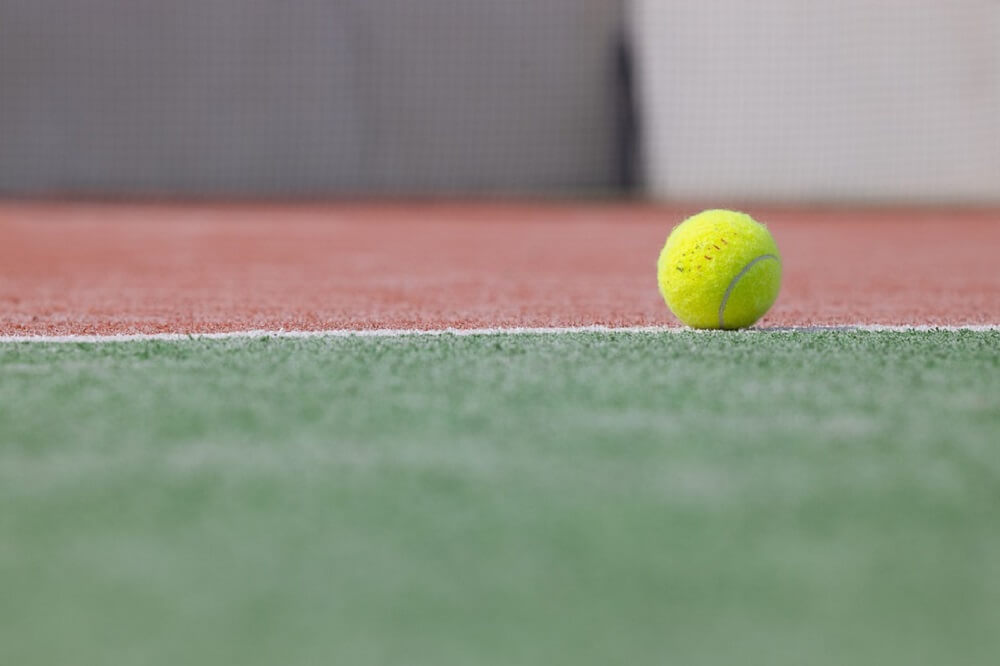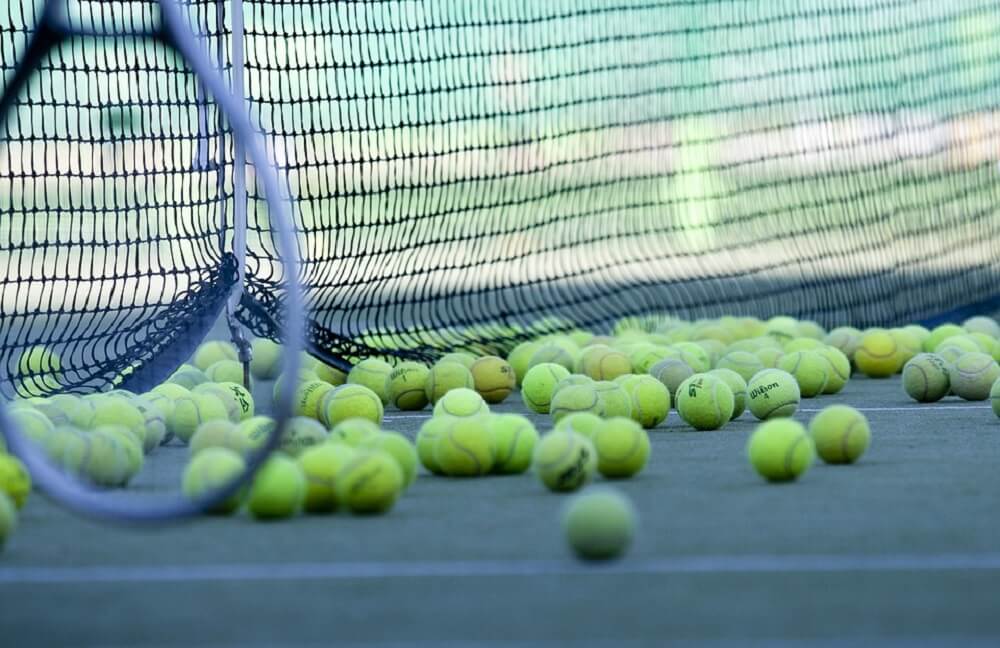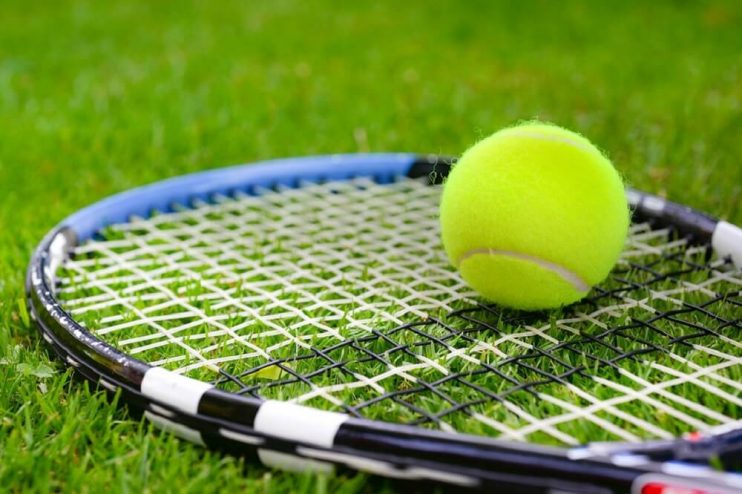At the start, maybe the types of tennis balls you used in your games never really seemed like something you should care for. It was just a matter of changing up your playing style to however the ball bounced. Maybe it’s been predictably unpredictable. Some balls bounce higher, some slower. Some felt heavy?
But aren’t you curious why it’s different?
There are actually a great number of factors to take into consideration when choosing a tennis ball. Not all tennis balls are created equal.
There are different types of tennis balls for every type of playing style. With this article we hope to give you the information you need to be able to nail down the right tennis ball for your needs.
So let’s start with the basics.
Table of Contents
Types of Tennis Balls
Speed:
- Fast – Not typically used in competition, suited for slower soft courts.
- Medium – Most commonly used by all players.
- Slow – Larger diameter than other balls for slower speed. Great for slowing down play on fast courts.
Regular duty or Extra Duty
This generally refers to the felt around the ball. Regular duty tennis balls have thinner woven felt tightly woven around the ball, making it great for clay and indoor courts. This ensures that dirt and debris doesn’t get picked up by the ball as it bounces, in turn making the ball heavier and slower, duller bounces.
Extra duty tennis balls have thicker felt woven a bit looser around the core. The thicker felt gives it a longer life-span and helps keep its durability longer on hard surfaces. These are best used for hard courts, as they can easily pick up dirt and debris from soft courts (namely clay courts) and will take on weight at an alarming speed.
While we’re on that topic, here is a brief outline of what the different types of courts are, as you’ll need to know what court you’ll be playing with to choose the best tennis ball for your playing style.
Types of Tennis Courts

Soft-Courts:
Generally limited to indoor and clay courts, these courts typically require the use of regular duty tennis balls.
The benefits of clay courts include being able to slide into shots, rather than coming to complete stops for shots on hard courts. However clay courts are high maintenance as weather and consistent use tend to loosen the top layer. Interestingly enough, bounces are higher and slower on clay courts.
Hard Courts:
Hard courts tend to be made of asphalt or concrete material. The surfaces are hard, and require complete stops before you can land your shot. Tennis balls bounce faster than soft courts, but slightly slower than grass courts.
Tennis on hard courts is known to be a little easier. Bounces are more predictable and easier to maneuver than other courts.
Grass Courts:
Tennis balls tend to have more of a horizontal bounce on grass courts, compared to hard courts. Because of this, grass courts have faster, lower shots.
High Altitude:
High altitude refers to depressurized tennis balls made for use in high altitudes. In high altitudes, which ITF considers 4,000 ft above sea level or higher, the air thins out resulting in lower air pressure. This means these small pressurized tennis balls would fly at insane speeds! Appropriately high altitude balls are 6% bigger, are less pressurized (or pressureless) than your average tennis ball to help slow the ball down in higher altitudes.
Pressurized or Pressureless
Pressurized tennis balls are commonly used for match play, competitions and league play. They offer speed and bounce needed to play against someone with predictability. Because they are pressurized, they will slowly lose pressure overtime as gases slowly begin to leak due to pressure difference.
These balls will come in a pressurized can or tube to prevent them from leaking gases, keeping them the same pressure as they were when first manufactured.
Pressureless tennis balls have a soft rubber core and are mainly used for recreational players as for cost efficiency. Pressureless tennis balls are commonly used for ball machines or basket fed practice drills. These tennis balls are much heavier and have way less bounce. Interestingly enough, pressureless tennis balls will wear down with use, resulting in more bounce overtime!
Professional or Recreational
A professional playing style is much different than usual club or recreational play. It requires much higher quality tennis balls for players aiming for maximum performance on a court that simulates their upcoming tournament, competitions, etc.
If you’re looking to aim for professional play, do you research and choose the tournament or competition that you’re aiming for. Consider what kind of courts you’ll need to be training for and the best ball that court.
Professional tennis balls come with a strict set of conditions you’ll need to make sure your tennis ball follows. Luckily you don’t have to actually measure out and test the ball yourself, but you do have to check to see if they are ITF approved.
ITF is the International Tennis Federation, a federation of national associations. Any tennis ball that is ITF approved, is considered competition-grade.
Recreational tennis balls don’t have any set of conditions or true definition therefore can be wide in variety. Generally recreational tennis balls will be much cheaper, they can also be pressurised or pressureless. It just depends on how you want to play.
However there are a few rules in choosing a “good” tennis ball versus a tennis ball you might use to play with your dogs.
How Can You Tell What A Good Tennis Ball Is?

Now it’s time to choose a tennis ball for your playing style. Remember your goals and tennis court conditions.
Brands
There are trusted brands out there you can be sure will always deliver great quality. Stay away from brandless tennis balls. Generally, if your brand of choice does not have their own website, you might want to keep it at the bottom of the “try out” list.
Are they pressurized?
All good tennis balls are pressurized. It’s used in competitive matches, tournaments and it makes for consistency when trading balls.
An easy way to check if they’re pressurized is to open the can or tube they come in (if they don’t even come in a tube, they are not pressurized). If you hear the sound of pressure being released or a fizzing sound, then the tennis balls are pressurized. When tennis balls are pressurized manufacturing companies want to increase the shelf life and make sure that you get the same pressure from the day it was manufactured, so they add the same gases in the ball into the can to prevent gases from slowly leaking out of the ball– resulting in flat tennis balls.
If you have a can of tennis balls with cheap plastic tubing with little to no pressure release when you open it then you have pressureless balls…or flat tennis balls, which are less for playing and more for ball machines or basket fed practice drills.
Did they come flat?
We mentioned it briefly above, but if the tennis ball you’re inspecting feels hard or soft and squishy, most likely you have a flat ball. Precious gases were released overtime, either due to bad packaging or they were simply too old.
This tends to be the case when you buy tennis balls from stores that don’t regularly buy new stock. Sometimes the tennis balls on the shelves have been there too long. The best way to avoid this is to buy from a sports store, they generally have their equipment fly off their shelves fast enough to restock every season or so.
Are they yellow?
Tennis balls tend to be yellow in color for high visibility on the court. Generally balls will not deviate from highly saturated colors like yellow or green that look like it could be yellow. In some cases, practice balls made for beginners or juniors will have highly saturated orange or red patches to them.
Bounce test.
Simply bounce the ball on the ground to check it. A decent tennis ball would bounce back to you with little effort. If you find yourself having a hard time bouncing it back up, or just finding yourself putting a little too much strength in order to get it to bounce back, the tennis ball you’ve chosen might not be the best fit for the court.
Check the can.
If you’re at a physical location looking at different tennis ball brands in the can, just give it a squeeze. A light squeeze on the sides of the can will help you determine if they have air pressure in them. The can should feel firm.
The Best Tennis Balls You Can Buy
Without further ado, here are our top 5 tennis ball picks!
1. Wilson US Open Regular Tennis Balls
In terms of durability and predictability, Wilson’s US Open Regular tennis balls have been the official tennis ball for every US Open for the past 40+ years, since 1972.
Found under the “premium” section of the Wilson website, the Wilson US Open Regular Tennis Balls are the best suited for clay and indoor courts. They make great companions for beginner to skilled tennis players looking for affordably priced tennis balls. These tennis balls also sport their long lasting Tex Tech premium woven felt, made from high-grade wool to further emphasize its durability.
ITF and USTA approved.
- WILSON US OPEN REGULAR DUTY TENNIS BALLS: For the past 40+ years, every point at the US Open has been scored with a Wilson US Open tennis ball. Unparalleled consistency and performance make it the gold standard in tennis, trusted by the best in the game when it's all on the line.
- PRODUCT FEATURES: The US Open Regular Duty Tennis Ball is Approved by USTA & ITF for competitive play and is also the Official Ball of the US Open. It is made with premium woven felt and Ideal performance is on soft, clay/indoor surfaces
- OFFICIAL BALL OF THE US OPEN: Offering optimal performance, consistency, and durability, its no wonder why the Wilson US Open Regular Duty Tennis has been the official ball of the US Open for over 25 years.
2. Slazenger Wimbledon Tennis Balls
Slazenger Wimbledon Tennis balls have been the official tennis ball supplier for The Wimbledon Tennis Tournament, or better known as The Championships. Slazenger holds the longest sporting partnership supplying their tennis balls to The Championships since 1902, a whopping over 100 years ago.
Now if you’re familiar with The Championships, you might be a little concerned knowing that the tournament takes place on a grass court. While they work perfectly well on grass courts, the Slazenger Wimbledon Tennis Balls are considered “Balanced”, meaning they are made for a wide range of surfaces.
They accomplish this with their strive for delivering the best tennis ball technology for Wimbledon.
- Their Tour Core™ technology: Utilizes premium woven cloth, using the finest wool to achieve a tighter weave for increased durability and responsiveness.
- Slazenger’s Hydroguard™ technology: This cloth repels up to 70% more water than your standard tennis ball.
- Ultra Vis dye: Another creative patented idea from Slazenger, creating a ball that has optimum visibility for both players and spectators.
While Slazenger always keeps their technology in mind for the Wimbledon Tennis Tournament, their tennis balls are still widely available to the public. Sharing all their best efforts and high quality standards with the rest of us. ITF approved.
- Slazenger ultimate performance tennis ball
- Slazenger’s patented hydro guard technology repels up to 70 percent more water than a standard ball
- With tour core and premium woven cloth
3. Penn Championship High Altitude Tennis Balls
Penn Championship High Altitude Tennis Balls are effectively the best choice for courts 3,000FT above sea level. Penn Championships is widely known as America’s #1 best seller tennis ball, as well as the official tennis ball of choice for the USTA Leagues.
The United States Tennis Association is a national governing body for tennis. A not-for-profit organization that invests 100% of its proceeds to promote and develop tennis.
With such a huge leading organization for tennis backing up Penn Championship tennis balls, it comes to no surprise that it’s on our top 5 list. Penn Championship represents a standard in the USA that other balls measure up against.
But what’s really unique about Penn Championship tennis balls is the controlled fiber release for an even nap, combining this with its interlocked wool fiber for longer wear. To top it off, it uses natural rubber for a consistent feel and reduced shock. USTA and ITF approved.
4. Wilson Prime All Court Tennis Balls
We talked a little bit about “balanced” tennis balls when we were reviewing the Slazenger Wimbledon Tennis balls, but here we have the Wilson Prime All Court Tennis balls that were specifically made to be something in the middle of regular duty and extra duty well. A great choice if you’re not limited to just hard or soft courts, or find yourself going back and forth between the two.
Of course, we always recommend using tennis balls made for specific courts, having a tennis ball that performs decently enough on all surfaces is great to have if you find yourself in a situation where you’re switching a lot. USTA and ITF approved.
5. Dunlop ATP Championship Tennis Balls
Another durable all court tennis ball is the Dunlop ATP Championship Tennis ball. Endorsed by the ATP World Tour, a worldwide top-tier tennis tour for men organized by the Association of Tennis Professionals, Dunlop ATP Championship tennis balls are a great mid-range ball for club and recreational players.
This all rounder sports Dunlop’s MAX CORE technology, which is specially engineered for use with their lighter, DURAFELT HD CLOTH premium non-woven cloth. Delivering superb consistency with good durability.
- ENDORSED BY ATP WORLD TOUR: The Dunlop ATP Championship Extra Duty Tennis Ball Can is officially endorsed by the ATP World Tour and this mid-range ball is ideal for club and recreational players
- EXTRA-DUTY DURABLE FELT: Extra Duty Felt makes this ball ideal for outdoor Hardcourt play
- QUANTITY: 12 x 3-ball pressurized cans
Final Thoughts
There was a lot of information here in this guide, yet we have only touched the basics. After reading this guide, we hope that you will be well equipped with enough knowledge to be able to buy the tennis ball that best fits your current playing style… Or your future playing style. Knowing what type of court you’re playing on or will be playing on can dramatically change the quality or type of tennis ball you’ll need to be training with.
As mentioned before, every tennis ball has a purpose and if that purpose aligns with your needs then it’s a perfect fit. After that, it’s all about testing different qualities and brands to find which feels better for you.
Tennis balls have a huge effect on your performance in the court, so it’s important you choose one that fits your needs. If this guide has helped you in anyway, consider passing it on to someone in need of the same information you once sought out. Always remember to enjoy the process and good luck on your games!






